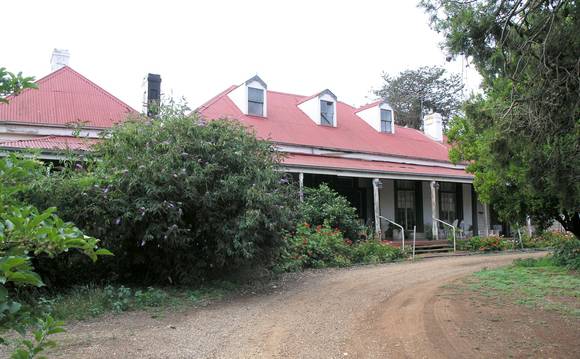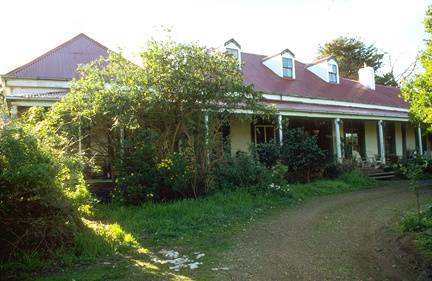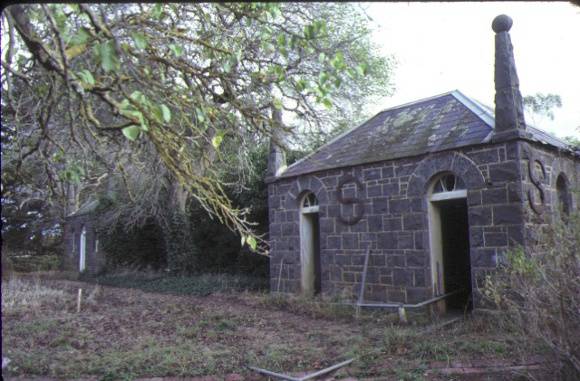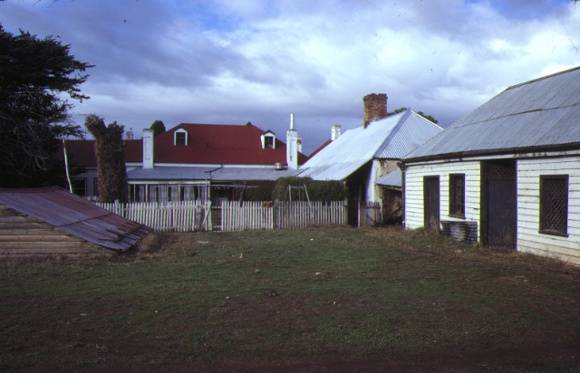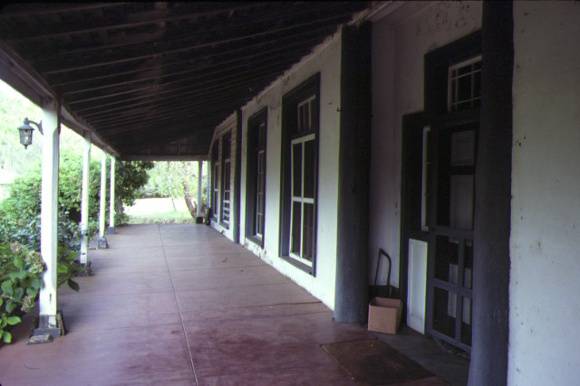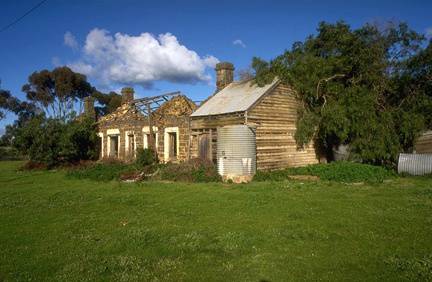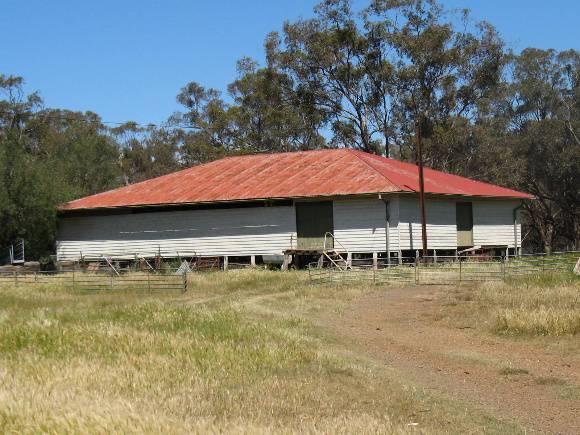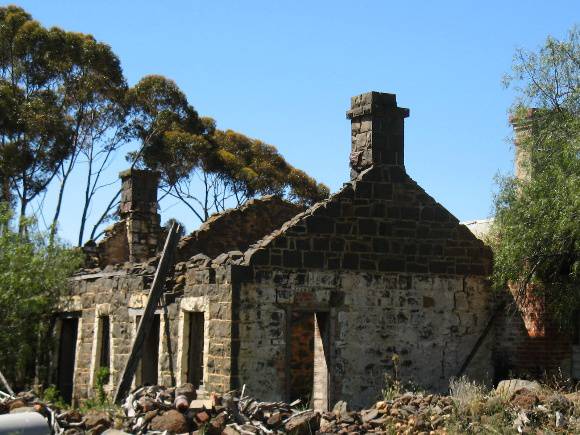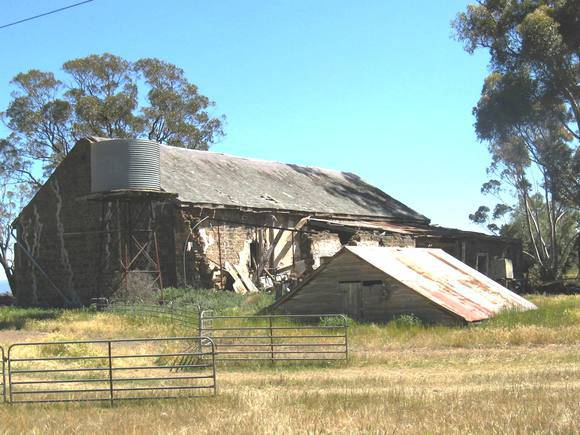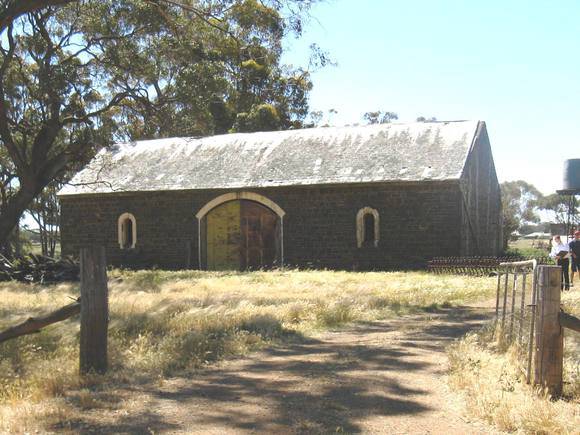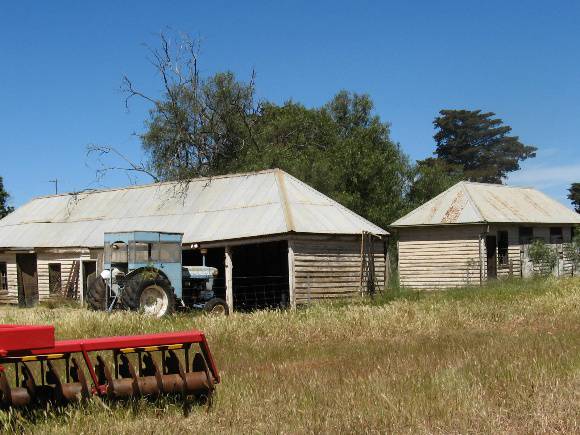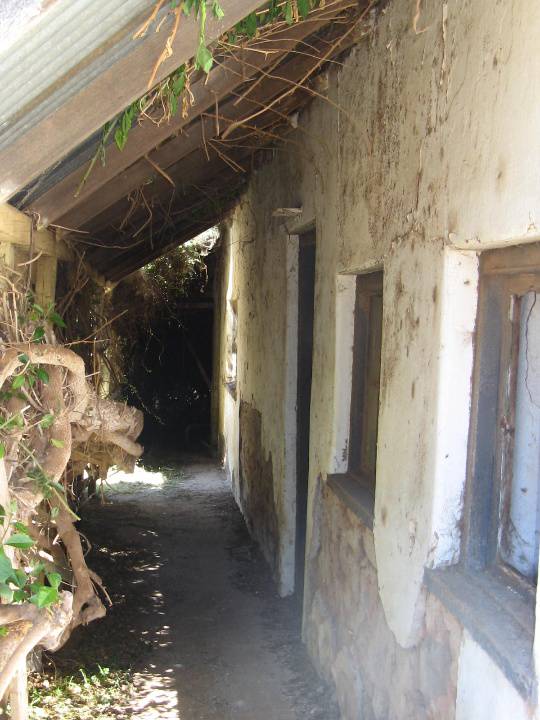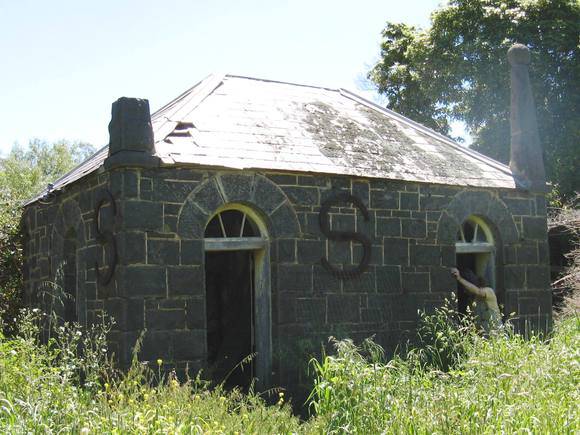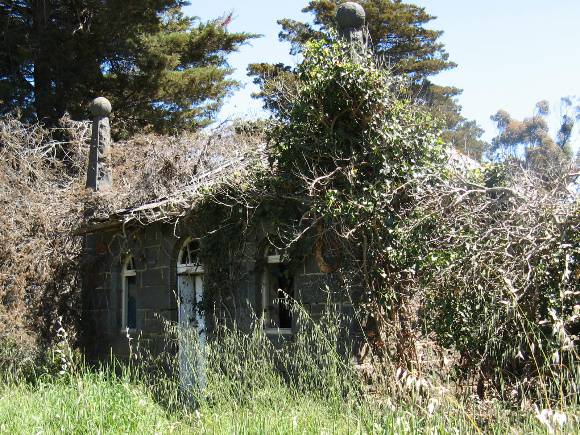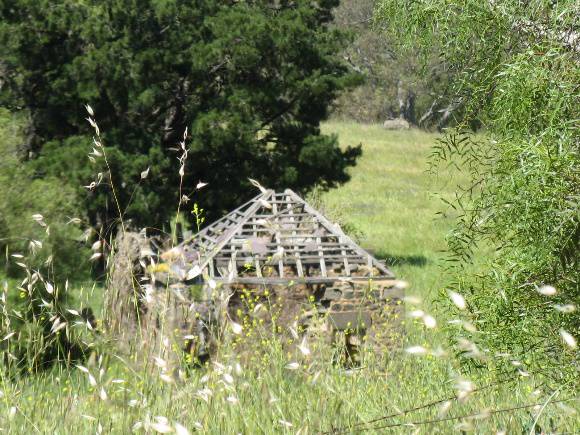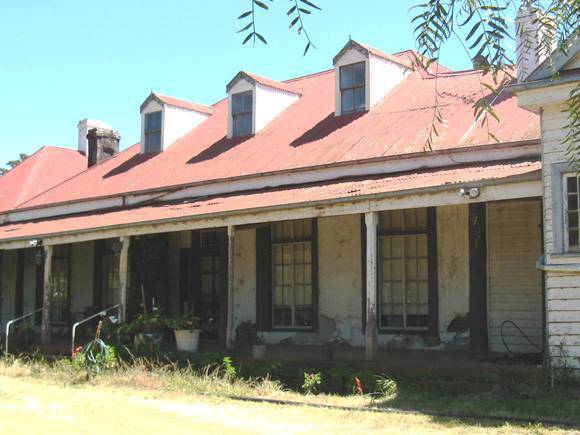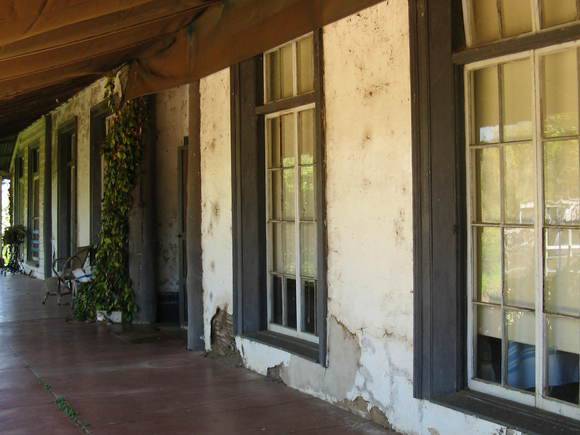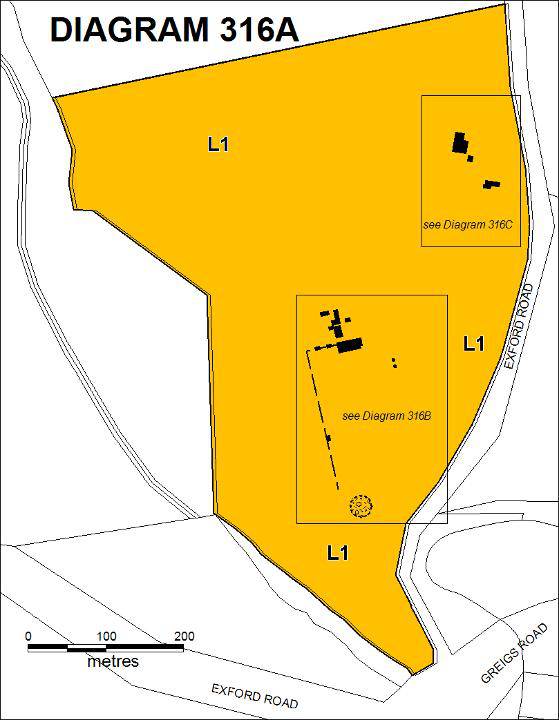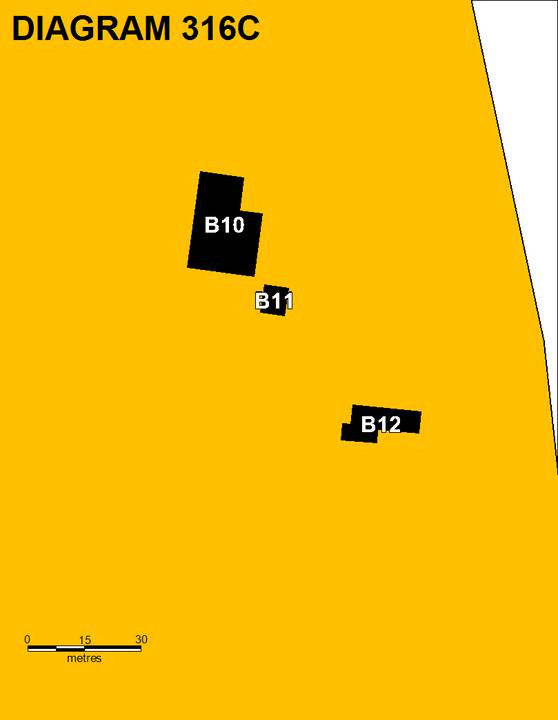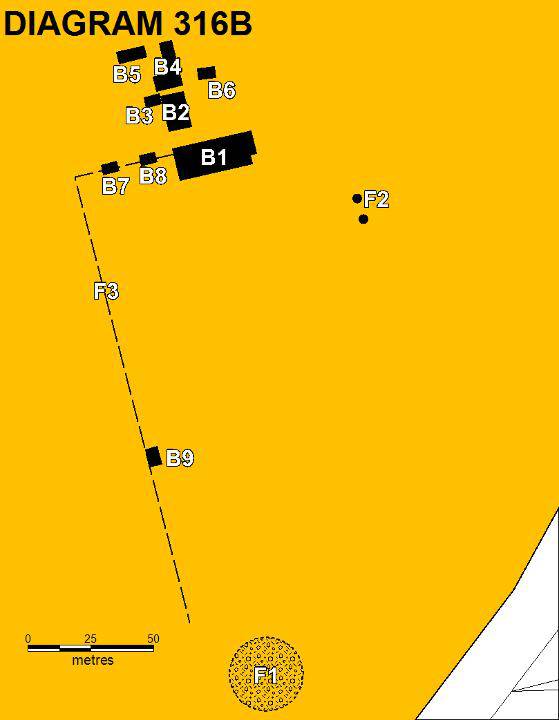| Back to search results » | Back to search page » |
|
EXFORD HOMESTEAD
Statement of Significance
What is significant?
Exford Homestead is one of the oldest residences in Victoria and part
of a rare surviving 1840s homestead complex. It is a farming property
now comprising approximately 30.5 hectares located 3.5km south of
South Melton where sheep have been raised since the earliest phase of
European occupation of the Port Phillip District (Victoria). The site
was occupied from 1840 by Dr John Watton, a member of the Port Phillip
Association, a syndicate of Van Diemens Land colonists formed in 1835
with the aim of establishing pastoral activities on the north shore of
the Bass Strait. The place was then part of a large run taken up in
1842 by emigrant landowner Simon Staughton. Eventually extending for many thousands of hectares, the run was
divided into four smaller properties after Staughton's death in 1863.
The place retains an early 1840s homestead building and outbuildings
constructed of locally hewn timber, mud and lath rendering, brick and
local stone. Subsequent additions in locally-quarried bluestone date
from the mid 1850s, after security of tenure had been gained, and
include a double-height store, a smithy with attached accommodation,
two bluestone pavilions and bluestone fence enclosing an orchard. The
Staughton 'orb' is carved into the timber posts surmounting the
bluestone fence and gateposts. It is also found in the bluestone
pavilions of the 1850s. The extent of Staughton's holding was marked
at quarter mile intervals with posts featuring a similar carved timber
orb. A suite of timber additions introduced in the 1930s demonstrate a
later phase of development at the place. Exford Homestead was a haven for Aboriginal people during the early
contact period, a reflection of Simon Staughton's commitment to the
well-being of the indigenous population. Local tribes-people were
employed on the estate to erect fencing.
How is it significant?
Exford Homestead satisfies the following criteria for inclusion in
the Victorian Heritage Register. Criterion A Importance to the course, or pattern, of Victoria's
cultural history.
Why is it significant? Exford Homestead is of historical significance for its direct
association with the earliest phase of European occupation of the Port
Phillip District (Victoria). The site was first occupied from 1840 by
Dr John Watton, a member of the Port Phillip Association, a syndicate
of Van Diemonian colonists formed in 1835 with the aim of establishing
pastoral activities on the north shore of the Bass Strait. Exford Homestead is of historical significance as the last remnant of
'Exford' a once extensive run which has from its initial occupation,
through acquisition by Simon Staughton in 1842 and later occupation by
his descendants to the present, been in continuous operation as a
sheep farm. Sheep farming was the primary reason for the settlement of
the Port Phillip District and became a significant part of the
Victorian economy. The mid-twentieth century shearing shed reflects
the continued use of the place for sheep farming and is of
contributory significance. Exford Homestead demonstrates the political and social changes which
affected the Port Phillip District and Victoria in the early years of
European settlement. The difference between the early 1840s timber
buildings and the more sophisticated bluestone structures reflects
increasing prosperity following the gold rushes of the 1850s, and the
associated influx of skilled immigrants. The construction technologies
and refined materials used in the 1850s bluestone buildings
demonstrate that pastoralists were by then willing to construct more
permanent buildings with greater architectural pretension due to an
ability to obtain secure land tenure. The distinctive bluestone fence
to the west and south of the homestead is also believed to date from
this phase of development. (Criterion A) The 1840s Exford Homestead is one of the earliest residences in
Victoria. The homestead and outbuildings are rare surviving examples
from this period and demonstrate an unusual variety of vernacular
construction technologies. Exford homestead is a rare example of a
generously-proportioned homestead constructed in the pretenure period
of the early-1840s. It was typical for early homestead buildings to be
replaced or significantly improved as land tenure was secured and
wealth increased. The site of Dr Watton's residence is of high level potential
archaeological significance as it is likely to contain features,
relics and deposits related to the earliest phase of European
settlement of Victoria. The area to the north of the homestead where
early outbuildings are likely to have been located is also of
potential archaeological significance. (Criterion C) The isolation of early homesteads demanded self-sufficiency,
resulting in the use of vernacular technologies and locally available
materials and/or pre-fabricated buildings. The early outbuildings at
Exford were constructed of roughly-hewn timber framing and timber
slabs, and in the case of the detached kitchen, of local stone and
brick. The homestead itself is constructed of eight large timber posts
hewn from tree trunks. These are located at each corner of the house
and flanking the front door to the south and rear door to the north.
The timber framed walls are clad with horizontal timber slabs applied
with mud under a later render finish. The range of materials and
technologies used at Exford explains the diversity in the external
presentation of the early homestead buildings. Many early homesteads were distinguished by a sense of enclosure,
with walls, hedges and tree plantings variously providing formal
settings, protection from prevailing winds, a sense of security in
little known and sometimes uncharted landscapes and distinction
between domestic and agricultural areas. This distinction was
typically reinforced by plantings, with the enclosed areas planted
with European-style or exotic plantings, and natives beyond. At Exford
there is very limited evidence of early plantings but a bluestone wall
with an integrated timber post and rail fence was established to the
north-west of the homestead returning to the south. The typical layout of pastoral estates is demonstrated at Exford,
whereby the main residence is the centrepiece, sited to optimise an
aspect, with domestic amenities to the rear and/or sides. Outbuildings
often included a freestanding kitchen, laundry, meat store, servants'
accommodation and stabling. At Exford there is a clear distinction
between the domestic precinct and the agricultural grouping a short
distance to the north-east. Common denominators between early homesteads included access to water
and established roadways. This is assumed to explain the siting of Dr
Watton's residence at the southern part of the place, on low-lying
land presumably within the Werribee River flood plain. In contrast,
Staughton built a substantial homestead and outbuildings on elevated
ground to the north of the place, with views looking south over the
Werribee River and Toolern Creek. Proximity to a river crossing is
also likely to have been a factor in the desirability of the Exford
Homestead site. The road directly to the south of the property was on
one of the main routes from Melbourne to the west. (Criterion D) Exford is significant for its long association with the Staughton
family, one of the largest owners of freehold land in colonial
Victoria, only rivalled in this region by the Clarke and Chirnside
families. (Criterion H)
The property occupies a
picturesque setting with views over the Werribee River valley to the
south, and a stand of Grey Box (Eucalyptus microcarpa) to the
north.
Criterion B Possession of uncommon, rare or
endangered aspects of Victoria's cultural history.
Criterion C
Potential to yield information that will contribute to an
understanding of Victoria's cultural history.
Criterion D
Importance in demonstrating the principal characteristics of a class
of cultural places and objects.
Criterion H Special association
with the life or works of a person, or group of persons, of importance
in Victoria's history.
The group of 1850s Picturesque Gothic structures
which present as follies in the landscape are an uncommon feature. The
detailing to the two pavilions and the gardener's cottage has a level
of refinement seldom seen in such outbuildings.
The survival of the
indigenous Grey Box (Eucalyptus microcarpa) stand to the north of the
homestead is unusual. A more typical response to native vegetation by
early settlers in Victoria was for the trees to be felled, and the
land given over to pasture. (Criterion B)
Group
Farming and Grazing
Category
Homestead Complex


